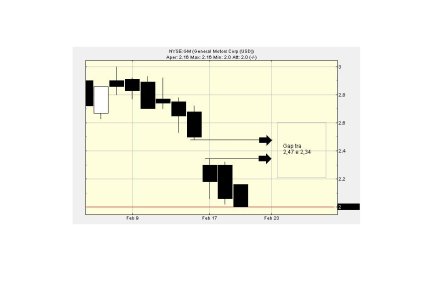General Motors Said to Plan Salaried-Job Cuts as It Presses UAW
Last Updated: February 7, 2009 00:00 EST
By Jeff Green
Feb. 7 (Bloomberg) --
General Motors Corp., trying to cut enough costs by a March 31 deadline to keep $13.4 billion in U.S. aid, is readying a plan to fire thousands of salaried employees, people familiar with the plans said.
The company will include the plans in a Feb. 17 progress report to the U.S. government, said the people, who asked not to be named because the plan isn’t public. The total may match the more than 5,000 salaried positions eliminated last year, the people said. GM started offering buyouts to 62,000 union workers this week and is in talks with the United Auto Workers about trimming benefits.
“They need to be very aggressive,” said Dennis Virag, president of the Automotive Consulting Group Inc. in Ann Arbor, Michigan. “They need to prove they can be viable. To do that, they need significant cutbacks of both salaried and union workers.”
GM is facing increased pressure to slash expenses after the Detroit automaker’s U.S. auto sales fell 49 percent in January. GM and Chrysler LLC have a Feb. 17 deadline for a progress report on their efforts to restructure their businesses, return to profit and repay $17.4 billion in U.S. loans by the end of 2011.
GM spokeswoman Renee Rashid-Merem said the company had no comment on the contents of the progress report. UAW spokesman Roger Kerson had no comment.
Last month, the company forecast U.S. industrywide sales this year of 10.5 million cars and light trucks, compared with 13.2 million last year and an average of 16 million this decade.
Plunging Sales
GM said it expects global sales will fall to 57.5 million autos from 67.1 million last year, or about 10 percent worse than a December forecast for global sales.
“The decline is a global situation, so the cuts need to be made on a worldwide basis,” Virag said.
GM managers are looking for positions to eliminate in all departments worldwide as global demand shrinks, said the people. The automaker may announce some actions prior to the Feb. 17 report, the people said.
GM said in the Dec. 2 report to Congress that it plans to cut its U.S. salaried and union workforce in 2012 to a range of 65,000 to 75,000 workers, from 96,537 last year.
The automaker reduced salaried costs by 30 percent last year through job cuts and elimination of benefits. Moves included cuts to health care for retirees 65 and older, a halt to matching contributions to 401(k) retirement programs, and the elimination of bonuses or raises this year. GM has about 29,000 U.S. salaried workers.
Union Talks
The salaried-job cuts may help with efforts to get additional union concessions, the people said. GM is offering retirement incentives to most of its 62,000 UAW members that include $20,000 cash and a $25,000 voucher for a new car for workers willing to retire or quit. About 22,000 of the GM workers are eligible to retire.
GM would like to get more than 10,000 union workers to leave and is expecting at least half that many to accept, one person said. Workers have until March 24 to decide.
The UAW has already agreed to end the so-called jobs bank program, which paid members to show up for work when there weren’t tasks to perform. The jobs bank program started in 1984 as part of an agreement to help prevent firings of workers replaced by robots or by other productivity improvements.
GM and the UAW are focusing talks on programs that supplement workers’ pay when they are laid off, the cost for vacations and other paid time off, and classification of so- called skilled trades positions like electricians and pipe fitters, said the people. There have been no agreements on changes in any of those areas.
UAW President Ron Gettelfinger has said the union will do its part to help find savings as long as other stakeholders accept concessions.
Union’s Concessions
The UAW agreed in 2007 to pay new employees half the wages of current workers -- a split the union resisted for most of the past seven decades -- and transfer liability for retiree health care to a union-run fund.
Chrysler, seeking to keep $4 billion in loans, has also worked out an agreement to end the jobs bank. In a Jan. 22 letter to local union leaders, UAW Chrysler Vice President General Holiefield said the supplemental pay and health-care coverage may also be subject to changes.
GM is in talks with bondholders to reduce $27.5 billion in unsecured debt to about $9.2 billion by swapping for equity. In a separate equity swap, it plans to reduce obligations to a union-retiree health-care fund by 50 percent to $10.2 billion.
The survival strategy also includes a plan for GM to sell, drop or de-emphasize half of its brands and to cull 1,700 U.S. dealers from its 6,400 total.
Plan Deadline Approaches
GM has made “extensive plans and progress,” director George Fisher said Feb. 3 in a statement after the board reviewed the automaker’s blueprint for the Feb. 17 deadline. Those talks included the UAW plan, the people said.
The Treasury Department set the loan terms under then- President George W. Bush in December, bailing out GM and No. 3 Chrysler after the companies said they would run out of operating funds as early as last month. The automakers say they oppose the idea of filing for bankruptcy.
GM has to present a plan by Feb. 17 that outlines its plan for long-term viability, competitiveness and energy efficiency, including how it will repay the loans, restructure its business and ensure a positive value for the automaker in the future. The plan must show monthly detail through 2010 and annual projected financial results through 2014.
By March 31, GM must have union approval for any contract changes as well as an agreement to cut the costs of the union retiree health-care fund. The automaker must also have begun the debt exchange offer with bondholders.










